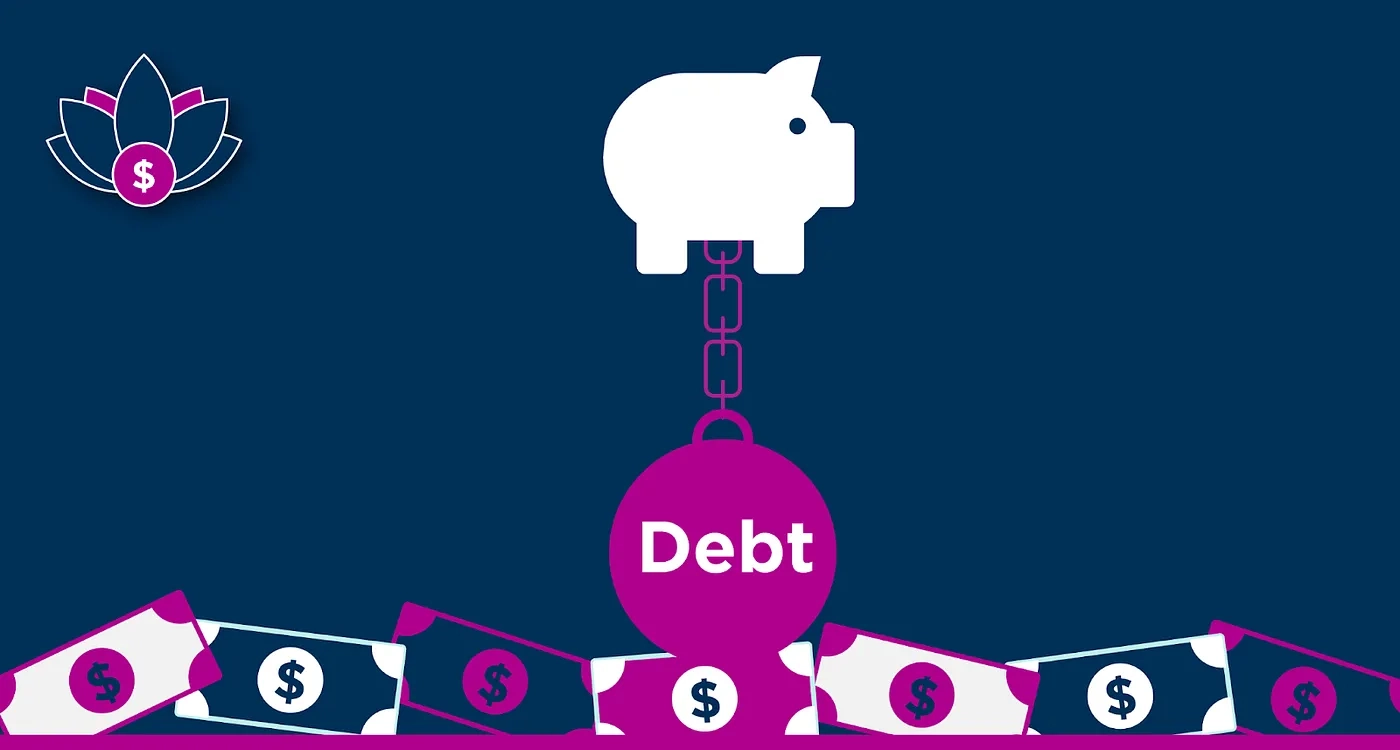Employees’ top financial stressor went from saving for retirement to saving for emergencies and making it to the next paycheck, amidst rising credit card, auto, medical, and student loan debt. Smart employers are strengthening financial wellness benefits for employees accordingly.

When you regale your families this holiday season with accounts of strengthening your financial wellness benefits for employees, you’ll point to the epochal shift in employee financial stressors in 2023 as a key catalyst.
You’ll cite how for billions of years employees were most stressed about saving for retirement but in 2023 employees started to stress more about making it to the next paycheck and the fact that they can’t afford an unexpected expense like a medical bill or auto repair.
And, you’ll deploy data and experts:
“What we found surprising is that this is the first year that saving for retirement is not the primary financial stress factor for employees. Instead, we found that day-to-day issues like emergency savings and paying for household bills are top of mind for workers,” said Jake Spiegel, research associate, Health and Wealth Benefits, at the Employee Benefit Research Institute, referencing their annual Workplace Wellness Survey with Greenwald Research.
Record household debt harms employees, employers
Total household debt increased by $228 billion (1.3%) in the third quarter of 2023, to $17.29 trillion, a new record, according to the Federal Reserve Bank of New York’s Quarterly Report on Household Debt and Credit.
Per the report, credit card balances increased by $48 billion to $1.08 trillion in Q3 2023, representing a 4.7% quarterly increase and a significant jump year over year.
Auto loan balances, which have been rising since 2011, rose by $13 billion to $1.6 trillion.
Meanwhile student loan balances jumped by $30 billion, also to $1.6 trillion, a popular number in the debt world these days, apparently.
But you’re just warming up your family at this point, table setting.
You’ll paint a vivid picture of a 2023 defined by rising debt for workers–from credit cards and auto and student loans–and of how financial stress is bad for employee health and productivity.
Most importantly, you’ll share, aggregate delinquency rates, which are a canary in a coal mine for employee financial health, increased in Q3 2023, with 3% of outstanding debt in some stage of delinquency at the end of September:
“Credit card balances experienced a large jump in the third quarter, consistent with strong consumer spending and real GDP growth,” said Donghoon Lee, Economic Research Advisor at the New York Fed. “The continued rise in credit card delinquency rates is broad based across area income and region, but particularly pronounced among millennials and those with auto loans or student loans.”
Given that the largest generation in the U.S. workforce these days is the millennial generation and millions of workers just resumed their student loan payments after years without having to worry about them, it’s in employers’ interest to strengthen financial wellness benefits for employees in 2024, you’ll point out.
Pass the eggnog, a loved one will then say, no doubt. You know who. We all have (at least) one.
Secure 2.0 student loan match
Undeterred (your resilience has led you to your position as a financial wellness benefits decider), you’ll tout the Secure 2.0 student loan match as a way to help your employees with student loans.
22 million people received their first bill since 2020, in October, as the federal student loan payment moratorium ended.
Roughly 60 percent paid, reports Stacy Cowley in the New York Times, although borrowers who miss payments will not have the delinquency reported to credit bureaus and will not have their wages or tax refunds garnished, through September of 2024, thanks to a policy the Biden administration calls the “on-ramp to repayment.”
So, as millions of workers are navigating the resumption of student loan payments, employers have an opportunity to help workers and yourselves by leveraging Secure 2.0.
Under the new law, you’ll explain, beginning with contributions after December 31, 2023, employers can contribute to an employee’s retirement based on the amount they paid toward their student loan balance.
Sponsors of 401(k), 403(b), governmental 457(b) plans, and savings incentive match plans for employees of small employers (SIMPLE plans) can make matching contributions to employees’ qualified student loan payments (QSLPs) as if they were pretax, Roth or after-tax contributions.
For plan years starting after December 31, 2023, employers can offer the QSLP match even if employees aren’t contributing to a plan, making it possible for employers to eliminate the toxic choice employees are often forced to make between investing in retirement and paying down student loan debt.
Boom!
If your family isn’t standing, cheering you on, by this point, then just wait until you get to why no financial wellness program is complete without emergency savings options.
Embedding emergency savings at work
Buckle up, family!, you’ll exclaim: Secure 2.0 also enables sponsors of 401(k), 403(b) and governmental 457(b) plans to offer non-highly compensated employees pension-linked emergency savings accounts in plan years beginning after December 31, 2023.
Employees would contribute to these accounts on a Roth basis and could make withdrawals as frequently as monthly. Hallelujah!
There is much to celebrate, yes, but “while these new policies allow employers to auto-enroll workers into an emergency savings option, there are no auto-enrollment options for employees who don’t have access to, or are not participating in, retirement plans — about half of all workers,” write Timothy Flacke, Co-Founder And Executive Director, Commonwealth, and Claire Chamberlain, Global Head Of Social Impact, BlackRock in Employee Benefit News.
As they point out, only 68% of the workforce has access to employer-sponsored retirement plans.
A majority of workers who aren’t eligible for or covered by an employer-sponsored plan identify as women, and a Voya study finds that Black and Latinx workers participate in employer-sponsored plans at lower rates.
“These results indicate the need to address emergency savings outside of retirement plans in order to close the racial and gender wealth gaps. Effective policy for workers without access to retirement plans will be vital to build the financial security of low and moderate-income workers,” say Flacke and Chamberlain.
Ask payroll companies about emergency savings
To do so, the authors suggest payroll companies and retirement recordkeepers can help because they are already integrated into employees’ financial lives:
“Employers can demand these savings features from their providers — and they can work across departments, from payroll to benefits to the C-suite, to ensure that available emergency savings options are successfully communicated to employees — especially lower wage workers, and workers of color.”
Sounds good, you’ll bawl:
If 2023 is the year that emergency savings jumped on the agenda of financial wellness program leaders at employers across the country, will 2024 be the year emergency savings options become standard among financial wellness benefits for employees, Frank (your eggnog loving loved one; picture Uncle Frank in Home Alone, ’tis the season)?!
While emergency savings could be on its way to being a ubiquitous financial wellness benefit in 2024, medical debt benefits are nascent. However, given the scope of the growing challenge they address, employers will be hearing a lot more about them in 2024.
Medical debt is a growing problem for employees, employers
Earlier this month, the White House Office of Intergovernmental Affairs, National Economic Council, and Domestic Policy Council convened over 80 federal and state officials to discuss the growing medical debt challenge nationwide, exemplifying the gravity of the growing problem for people, governments, and organizations.
“One in three adults — nearly 100 million Americans — struggle with unpaid medical bills. Medical debt keeps everyday Americans from securing loans, seeking medical services, and affording the essentials they need to get by.”
And, increasingly, medical debt is a problem for employees, even ones with decent health insurance.
Health insurance alone isn’t enough
In fact, you’ll elucidate, alarming results of recent research from Neighborhood Trust Financial Partners (of which we’re a service) and RIP Medical Debt suggest workers with employer-provided health insurance “still reported high rates of medical debt (70%), risk of accruing future medical debt (40%), and stress due to medical debt (40%).”
Part of a multiphase effort by Neighborhood Trust and RIP Medical Debt to raise awareness of the problem and identify solutions, the brief, “Insurance alone is not enough,” offers insights on workers’ medical debt challenges and recommendations for employers.
Employers will need them: Nearly half of workers with employer-provided health insurance reported struggling to understand their coverage; and, when your workers are not equipped to make use of the benefits available to them, this confusion equals a lower ROI on your employer healthcare benefit spending.
As employers increasingly recognize medical debt translates to deferred care, worse health outcomes, and increased healthcare costs–not to mention increased absenteeism and job attrition, plus reduced productivity–financial wellness benefits for employees will increasingly include resources to address this challenge.
It’s a challenge that now hampers the majority of employees, and their employers, nationwide.
Personal financial coaching services poised for growth
The financial challenges facing employees continue to multiply as do the financial wellness benefits available to address them, you’ll opine, as you build to your crescendo.
But among the smartest investments employers can make in 2024 will be in financial coaching services for each individual employee, a financial literacy coach who will help your employees maximize the benefits you already offer while easing financial stress, reducing debt, improving credit, and building savings.
Do you want to supercharge your financial wellness program in 2024, you’ll bellow, then invest in financial coaching services. No more impersonal financial education, generic retirement planning seminars, and do-it-yourself financial literacy resources. They don’t work.
Yet, few employers have internalized this to date. But I have, you’ll note.
According to the Society for Human Resource Management and Morgan Stanley, only 21% of private, for-profit employers offer personal financial coaching services or a financial literacy coach as part of a financial wellness program.
Whether employees are struggling with credit card debt or student loans, medical debt or auto payments, debt collectors or wage garnishments, the savviest employers understand that it’s smart business, and increasingly necessary, to offer a financial wellness program that includes personal financial coaching services.
The opportunity for leadership and impact in 2024 is immense, you’ll declare, and the smartest employers will seize it!






